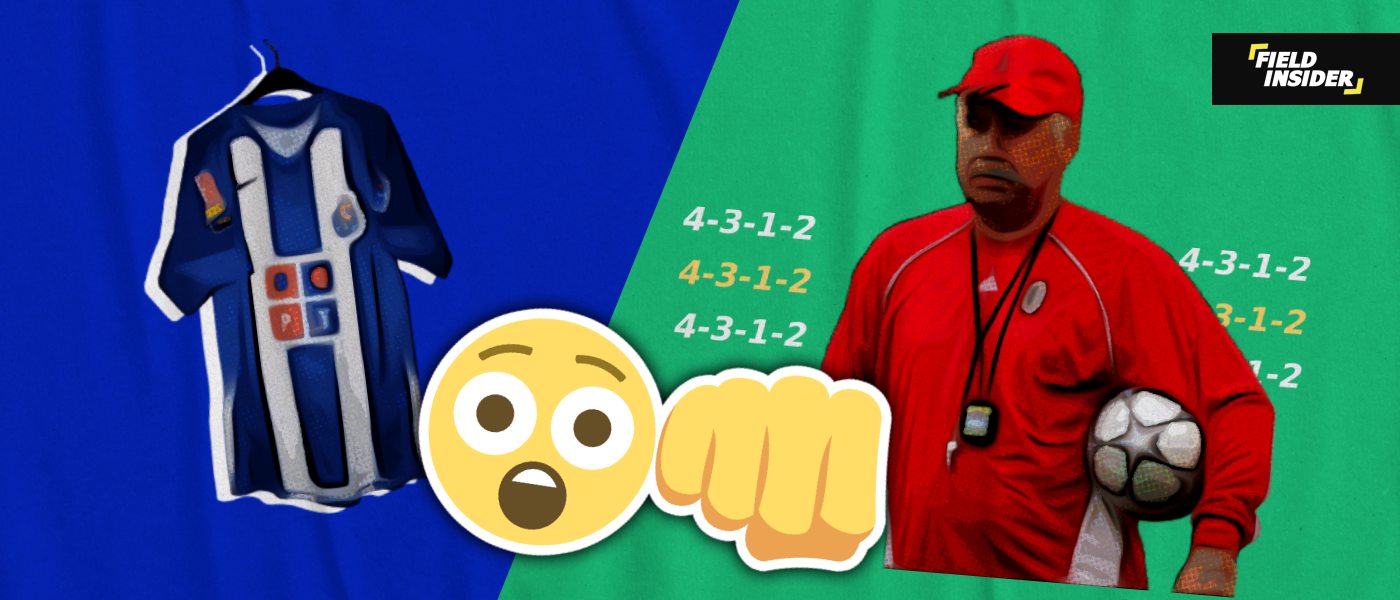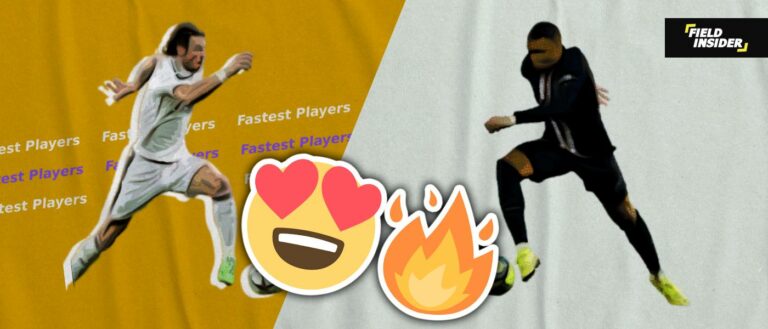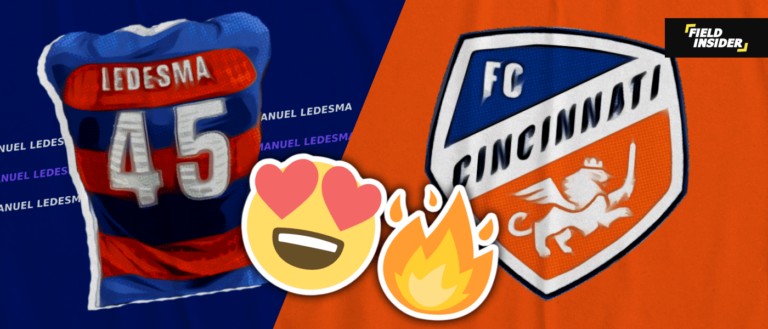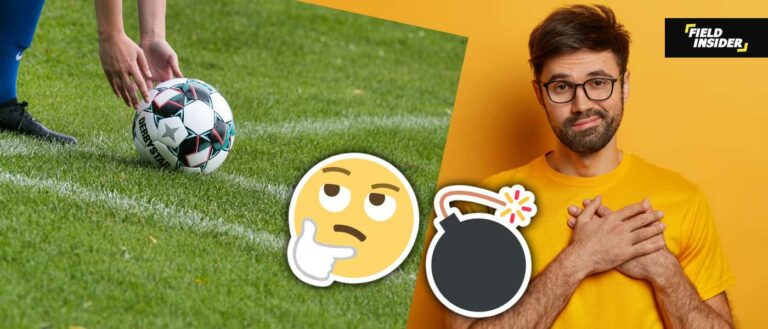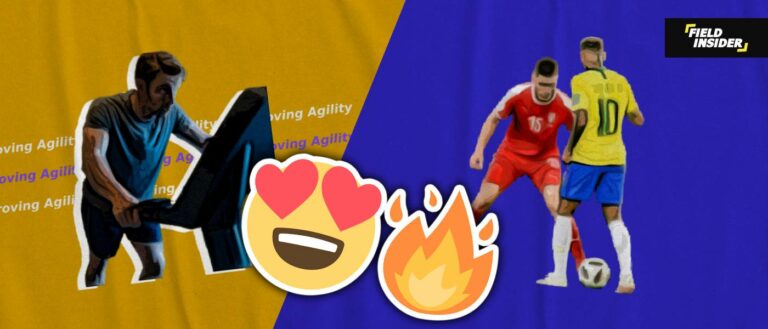The 4-3-1-2 Formation: Complete Handbook
The 4-3-1-2 soccer formation stands as a testament to tactical adaptability and strategic depth in modern football. This comprehensive guide explores its structure, advantages, and the strategic nuances required for mastery.
Aimed at coaches and players, it delves into player roles, tactical flexibility, and real-world applications. By dissecting its components, we aim to unlock the formation’s potential for those looking to enhance their tactical approach.
Whether you’re new to this formation or seeking to refine your strategy, this article offers the insights needed to navigate the complexities of the 4-3-1-2.
Key Takeaways
| Key Aspect | Details |
|---|---|
| Layout and Roles | – Four-man defense – Three versatile midfielders – One creative playmaker (CAM) – Two dynamic forwards |
| Tactical Flexibility | – Balances defensive solidity with attacking options – Allows for quick adaptation to game dynamics |
| Advantages | – Midfield dominance – Tight defensive organization – Concentrated, effective attacks |
| Challenges | – High stamina required for midfielders – Natural width may be limited – Adjustments needed against wide formations |
| Training Drills | – Position-specific drills for defenders, midfielders, and forwards – Team exercises to improve coordination and understanding – Emphasis on communication |
| Real-World Application | – Insights from successful team strategies – Notable matches highlighting formation effectiveness – Key takeaways from practical use |
Layout and Roles of the 4-3-1-2 Formation
The 4-3-1-2 formation is a tactical setup designed for teams looking to dominate the midfield while maintaining a strong defensive backbone. This formation emphasizes the importance of player roles and positioning to control the game’s flow and create scoring opportunities.
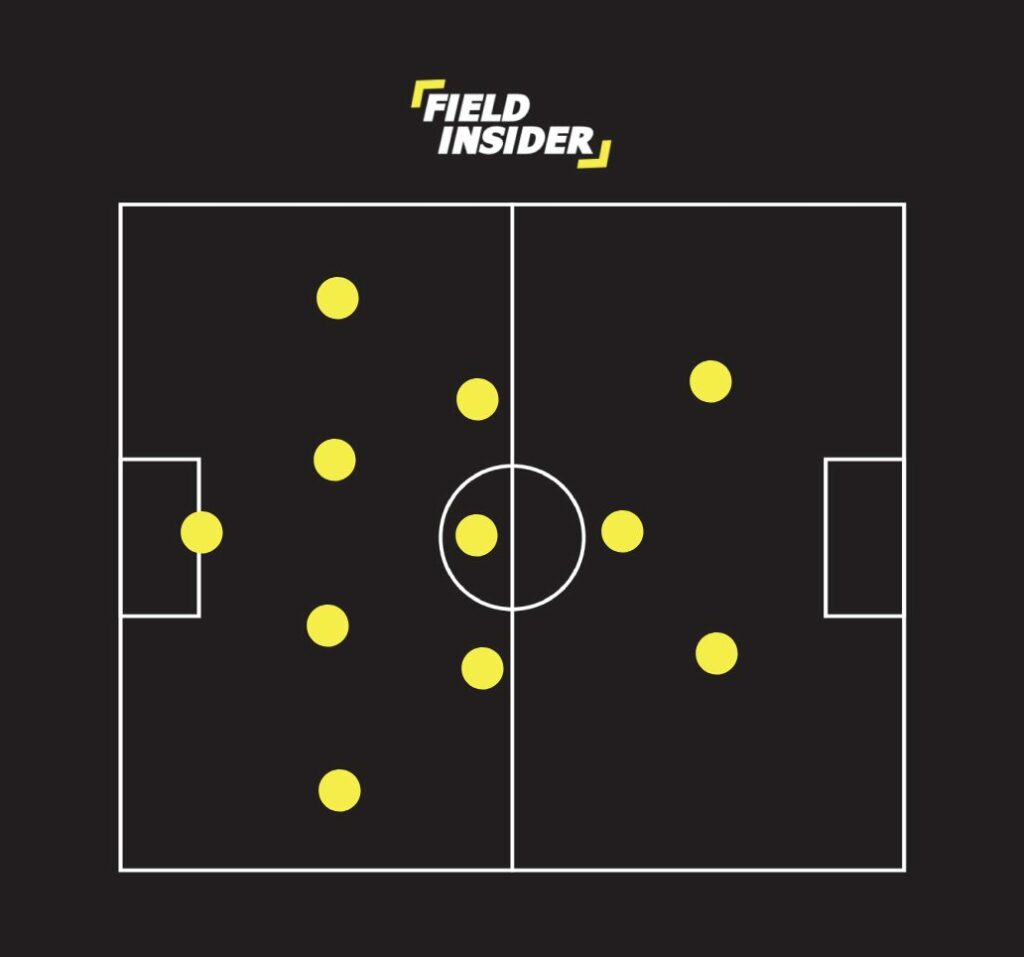
Defenders
In the 4-3-1-2 formation, defenders include two center-backs and two full-backs. The center-backs focus on neutralizing opposition attacks. The full-backs provide width and support in both defense and attack. Their ability to balance these duties is crucial.
Midfielders
The midfield in the 4-3-1-2 setup comprises three players with distinct roles. One acts as a defensive midfielder, providing a shield for the back four. The other two serve as box-to-box midfielders, contributing to both defense and attack. This midfield trio is pivotal in controlling the tempo of the game.
Attacking Midfielder
The attacking midfielder, or the “number 10”, plays just behind the strikers. They are the creative linchpin, tasked with unlocking defenses and crafting goal-scoring opportunities. Their role is critical in linking midfield action with forward momentum.
Forwards
The two forwards at the tip of the formation work closely to apply pressure on the opposition’s defense. They must exhibit strong communication, movement, and finishing skills to exploit scoring chances effectively. Their partnership is key to the formation’s attacking success.
Tactical Flexibility of the 4-3-1-2 Formation
The 4-3-1-2 formation stands out for its exceptional tactical flexibility, which allows teams to seamlessly switch between defense and attack. This adaptability is crucial for teams looking to impose their style on the game while being capable of responding to their opponents’ tactics effectively.
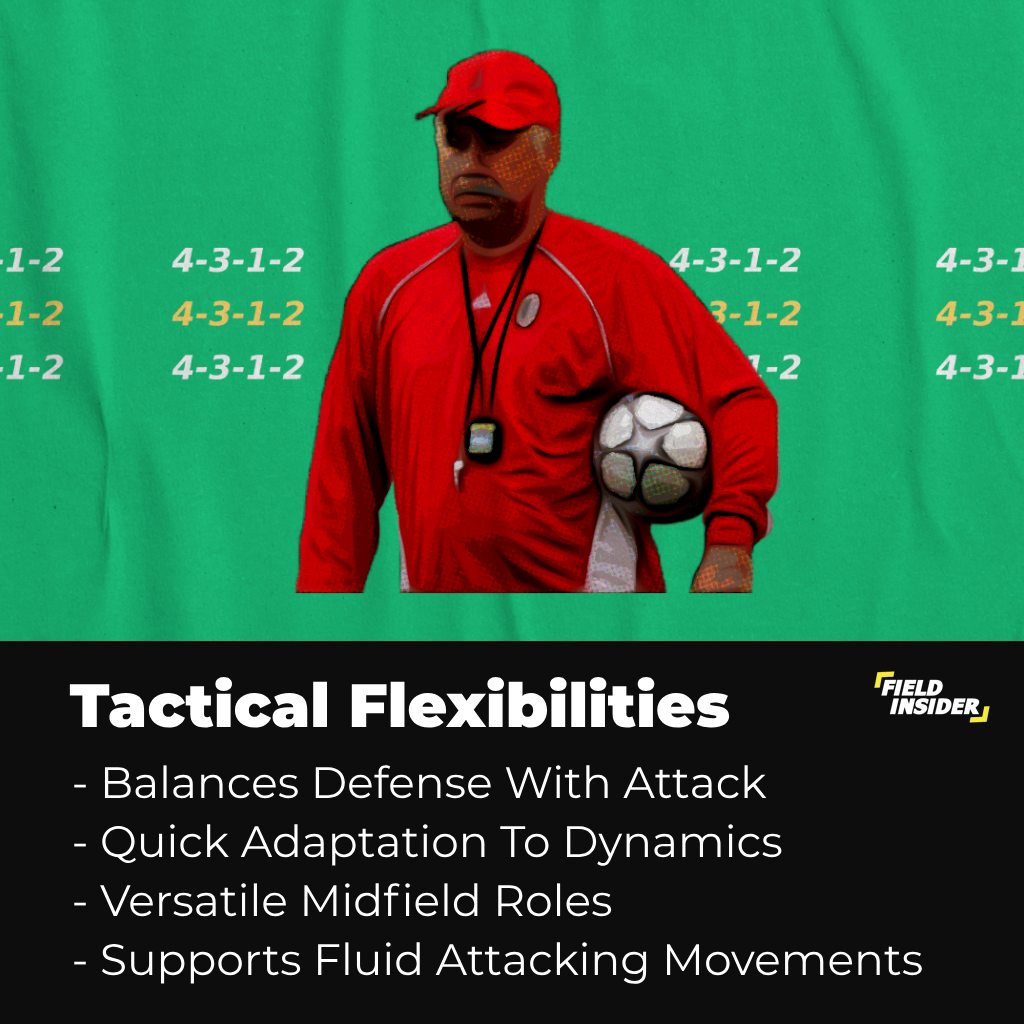
Defensive Adaptability
The 4-3-1-2’s defensive setup is inherently robust, with a solid backline supported by a defensive midfielder. This structure can be adjusted to form a more compact defense or expand to apply pressure on the opponents’ buildup play.
The flexibility to drop the midfield trio deeper enhances the team’s ability to absorb pressure, making it difficult for opponents to find space. Moreover, this adaptability is pivotal when facing teams with strong attacking flanks.
Midfield Versatility
At the heart of the 4-3-1-2 formation is a versatile midfield capable of dominating various facets of the game. The midfield trio must balance their defensive duties with their role in the team’s offensive ambitions.
This balance is crucial for maintaining possession, disrupting the opponents’ play, and facilitating the transition from defense to attack. This versatility is what makes the formation so effective, as it allows for a dynamic response to the changing rhythms of the game.
Attacking Fluidity
The attacking phase of the 4-3-1-2 formation is defined by its fluidity and dynamic interplay between the forwards and the attacking midfielder. This fluidity is designed to disorient and break through opposing defenses by creating and exploiting spaces.
The lone striker, supported by two attacking midfielders, allows for varied attacking approaches—ranging from direct plays to intricate passing maneuvers. The forwards’ ability to interchange positions and create openings is complemented by the attacking midfielder, who acts as the creative spark.
Forward metrics in two forward formation
The study ‘The influence of tactical formation on physical and technical match performance in professional soccer‘ presents an intriguing analysis of dribbling metrics across different forward formations.
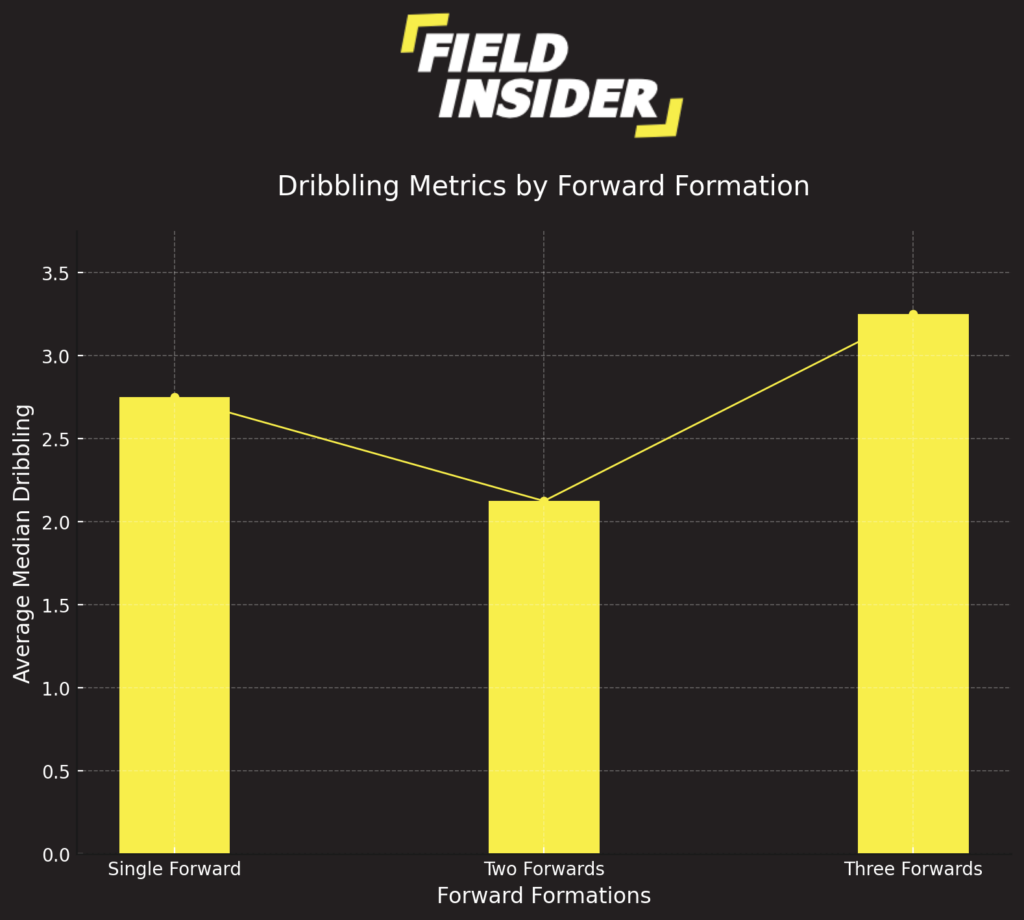
The bar chart reveals that a single forward formation averages a median dribbling rate of 2.75. In contrast, a two-forward setup shows a slight dip, with a median of 2.125. Interestingly, formations featuring three forwards register the highest median dribbling rate at 3.25.
This data suggests that teams employing a 4-3-1-2 formation, which utilizes two forwards, might experience a moderate dribbling output. Coaches might interpret this to emphasize dribbling drills in training for such formations.
Advantages of the 4-3-1-2 Formation
The 4-3-1-2 formation is celebrated for its strategic balance, offering teams a harmonious blend of defense, midfield control, and attacking precision. This structure leverages the collective strength of the team, emphasizing compactness and versatility to dominate matches.
Encourages Midfield Dominance
The midfield trio in the 4-3-1-2 setup is the engine of the team, tasked with controlling the tempo and flow of the game. Their strategic positioning allows for effective distribution of the ball, facilitating smooth transitions between defense and attack.
This dominance in midfield is crucial for maintaining possession and dictating the pace, giving the team a tactical advantage over opponents. The setup ensures that the midfield can adapt to different game situations, whether it’s holding onto a lead or chasing the game.
Tight Defensive Organization
With four defenders and a defensive midfielder forming a protective shield, the 4-3-1-2 formation excels in minimizing spaces for the opposition to exploit. This tight defensive organization is key to thwarting attacking plays and setting the foundation for secure defensive operations.
The central defenders, supported by the full-backs and the defensive midfielder, create a formidable barrier, making it challenging for opponents to penetrate the defense.
Concentrated Attacks
The 4-3-1-2 formation allows for concentrated attacks through the middle, utilizing the CAM and the forwards’ positional interplay to dismantle defenses. This setup capitalizes on the chemistry between the attacking players, creating opportunities for intricate passing sequences and direct assaults on goal.
The focus on central attacks requires defenders to concentrate their efforts, potentially opening up spaces for full-backs to advance and support the offense. This strategic approach to attacking plays emphasizes quality over quantity, focusing on creating high-value chances from structured plays.
Challenges of the 4-3-1-2 Formation
While the 4-3-1-2 formation offers numerous tactical advantages, it also presents specific challenges that teams must navigate to maximize its potential. Addressing these challenges is crucial for maintaining the formation’s effectiveness across different phases of the game.
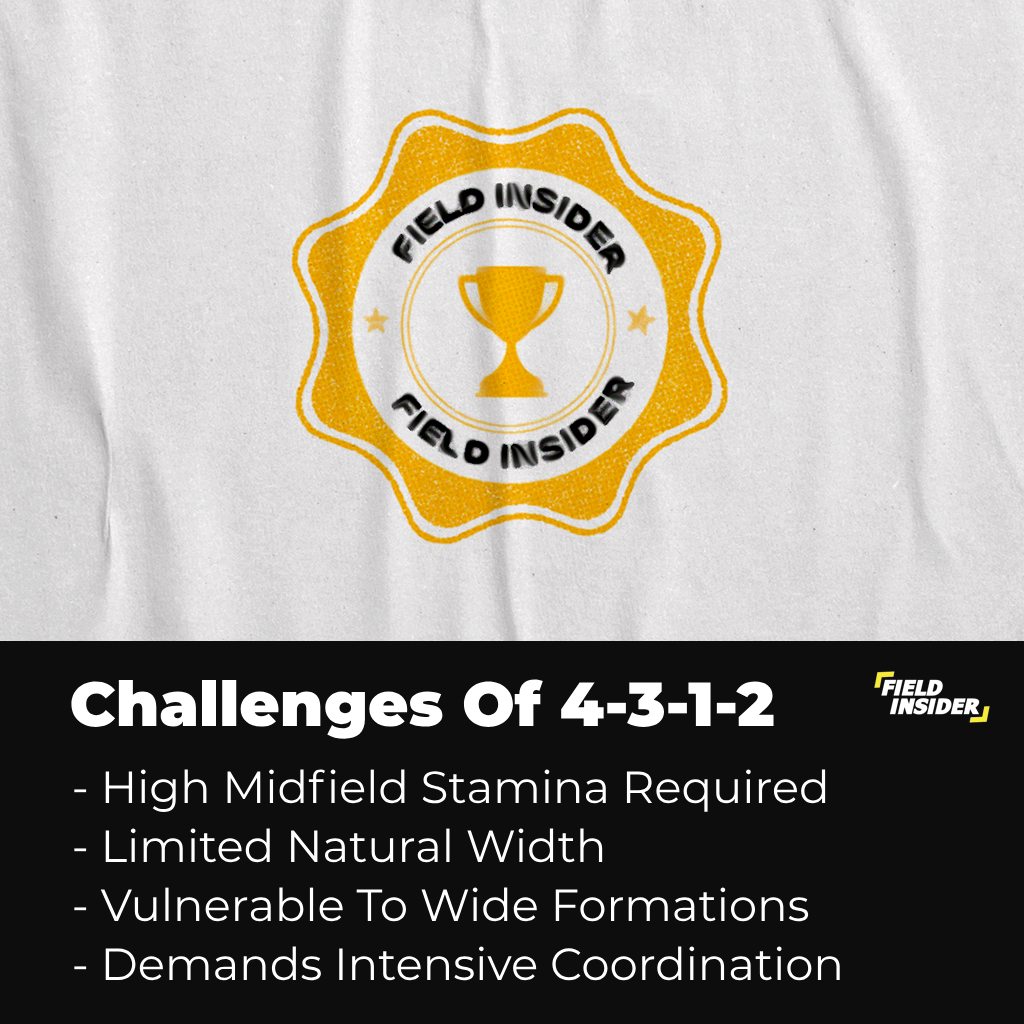
Requires High Stamina from Midfielders
The midfield trio in the 4-3-1-2 formation bears a heavy workload, constantly transitioning between defense and attack. Their roles demand high stamina and resilience, as they must cover extensive ground to support both the defensive line and the forwards.
This necessity for endurance can strain midfielders, especially in high-tempo matches or against physically demanding opponents. Teams must prioritize fitness and endurance training to ensure their midfielders can sustain their performance levels throughout the game.
Potential Lack of Natural Width
One inherent challenge of the 4-3-1-2 formation is its natural concentration on central play, which can lead to a lack of width in both attacking and defensive phases. This limitation might allow opponents to exploit the flanks, putting pressure on the full-backs to cover these areas effectively.
To mitigate this challenge, teams often rely on full-backs to provide width, requiring them to make overlapping runs and participate actively in the attack. However, this approach demands careful coordination and timing to avoid leaving gaps in the defense.
Adaptation Against Wide Formations
Teams employing the 4-3-1-2 formation might struggle against opponents using wide formations that stretch the play across the pitch. Wide formations can challenge the 4-3-1-2’s compact structure, creating spaces in wide areas for opponents to exploit.
To counter this, teams must adapt by ensuring midfielders and full-backs effectively track back and cover wide positions. This adjustment requires tactical flexibility and quick decision-making from players to maintain the formation’s integrity while responding to the threats posed by wide formations.
Case Studies : Porto’s Champions League Mastery (2003-04)
During the early 2000s, FC Porto, under the guidance of José Mourinho, became a European powerhouse, notably winning the UEFA Champions League in 2003-04. Their success was not just a testament to the quality of the squad but also Mourinho’s tactical ingenuity, particularly his use of the 4-3-1-2 formation.
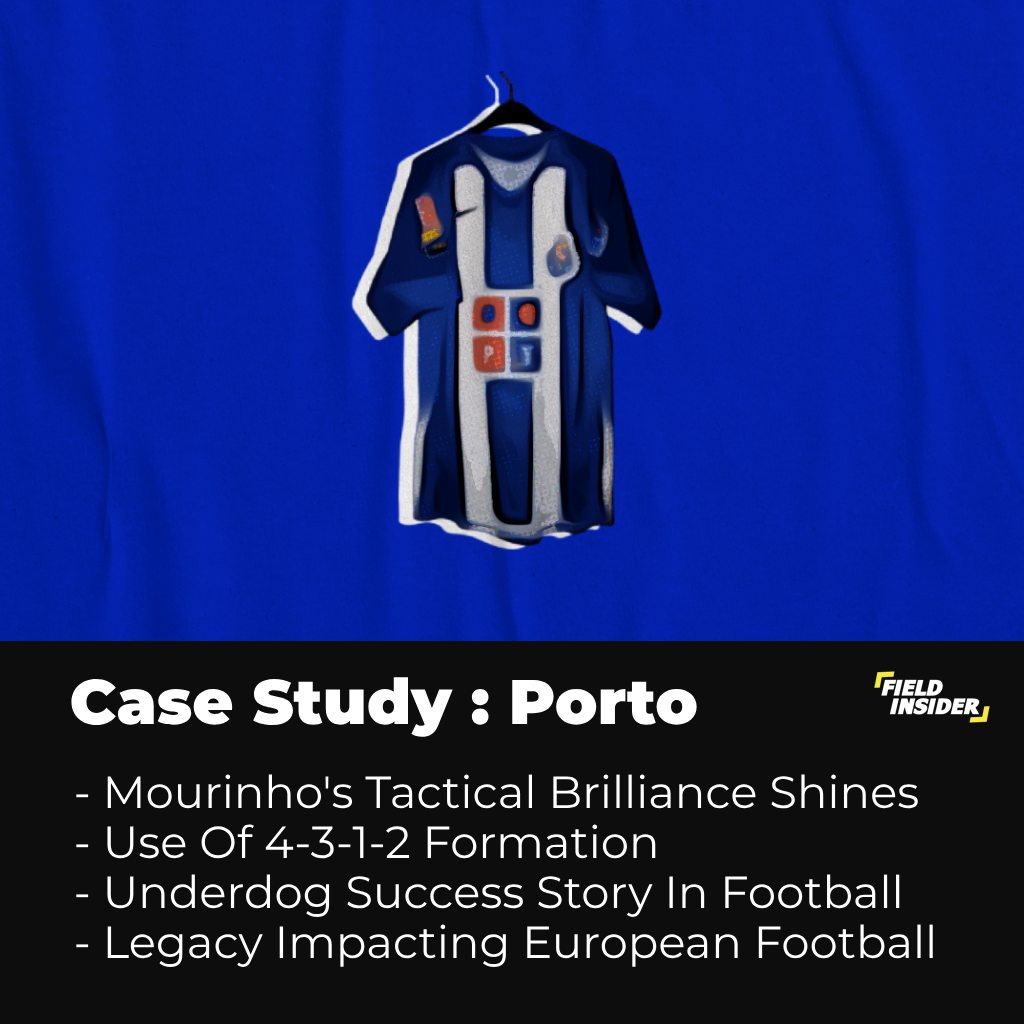
Tactical Mastery
José Mourinho’s approach with Porto was revolutionary. His strategic use of the 4-3-1-2 formation allowed Porto to control games through midfield dominance and a strong defensive setup. Mourinho’s tactics emphasized compactness, quick transitions, and exploiting the space behind opposing defenses.
This adaptability made Porto formidable opponents, capable of adjusting their game plan to counteract the strengths of any team they faced.
Team Cohesion
The success of the 4-3-1-2 formation under Mourinho was also due to the exceptional cohesion within the Porto squad. Every player knew their role and executed it with precision, from the defenders maintaining a solid backline to the midfielders controlling the tempo and the forwards applying pressure.
This unity was a product of rigorous training, a clear understanding of the tactical system, and Mourinho’s ability to instill a winning mentality in his players. The squad’s deep trust in Mourinho’s vision was evident in their disciplined performances and resilience under pressure.
Memorable Matches
Porto’s Champions League run included several standout performances that highlighted their tactical prowess. One of the most notable was the 2003-04 semi-final against Deportivo La Coruña, where Porto showcased their defensive solidity and ability to strike on the counter.
Another unforgettable moment was the final against AS Monaco, where Porto dominated, winning 3-0. These matches exemplified Porto’s tactical flexibility, defensive organization, and offensive efficiency, hallmarks of Mourinho’s 4-3-1-2 setup.
Training and Practice for the 4-3-1-2 Formation
Implementing the 4-3-1-2 formation successfully requires targeted training and practice sessions that focus on enhancing the understanding and execution of each player’s role within the formation. Here, we delve into drills and exercises tailored for defenders, midfielders, forwards, and overall team coordination to optimize performance in this tactical setup.
Training Drills for Players in Each Position
| Position | Training Focus | Suggested Drills |
|---|---|---|
| Defenders | Compact defense, communication, offensive transition | – Defending outnumbered attacks drills – Communication exercises during defensive setups – Full-backs participation in offensive plays |
| Midfielders | Stamina, ball control, spatial awareness | – Tight space ball control and quick decision-making drills – Transitioning between defense and attack exercises – Spatial awareness drills |
| Forwards | Space exploitation, movement, finishing | – One-two passes and creating shooting opportunities drills – Movement off the ball exercises – Finishing under pressure scenarios |
This table provides a structured approach to training specific positional roles within the 4-3-1-2 formation, highlighting the focus areas and drills that can enhance individual and collective performance on the pitch.
Team Exercises to Improve Coordination and Understanding
Team drills should simulate game scenarios that encourage players to adapt to the formation’s demands dynamically. Exercises focusing on maintaining formation structure during different phases of play can improve positional awareness and tactical discipline.
Practice matches that emphasize transitioning from a compact defensive shape to a more expansive attacking setup can help the team understand the formation’s fluid nature. Incorporating team coordination drills can significantly enhance overall understanding and execution.
Importance of Communication and Teamwork
Communication exercises are vital for fostering teamwork and understanding among players. Drills that require players to call out movements, intentions, and observations can improve on-field communication, essential for the 4-3-1-2 formation’s success.
Team bonding activities off the pitch can also strengthen relationships and trust, translating to better coordination and performance during matches.
Conclusion
The 4-3-1-2 formation offers a balanced tactical framework for teams seeking midfield dominance and defensive stability. Through tailored training drills and strategic adaptability, teams can exploit its strengths. Analyzing successful case studies provides invaluable insights for effective implementation.
Thus, mastering the 4-3-1-2 requires dedication, teamwork, and a deep understanding of its principles. This guide aims to equip coaches and players with the knowledge needed for successful application, encouraging a dynamic and strategic approach to soccer.


